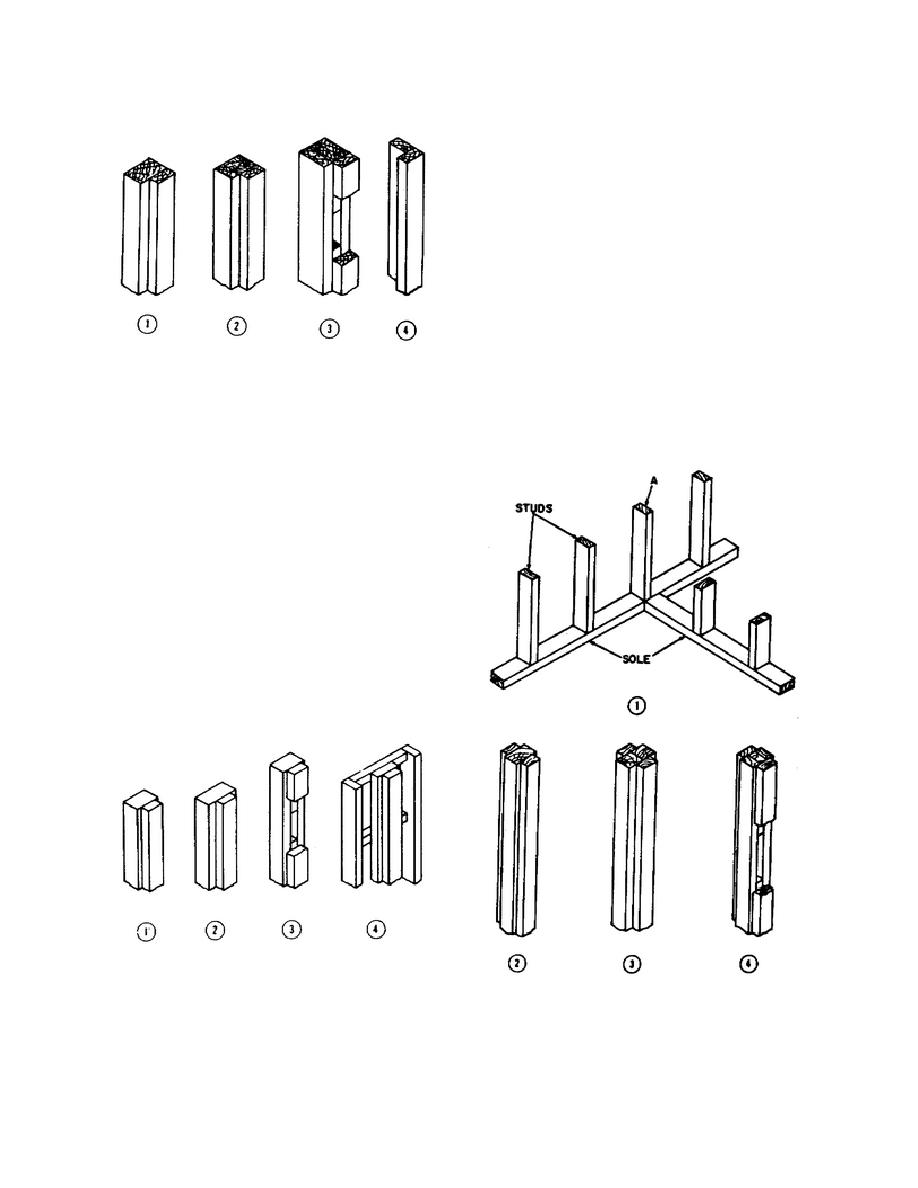
(4) A 2x4 may be nailed and centered
on the face side of a 2x6, with a horizontal bridging
nailed behind them to provide support and stiffness
(4, fig. 2-2).
(5) Where a partition is finished on one
side only as in most TO construction, the partition
post used consists of a simple stud, set in the outside
wall, in line with the side of a partition wall, and
furnished as stud A in 1, figure 2-3. The exact
position of the partition walls must be determined
before the posts are placed. Where the walls are
more than 4 inches thick, wider timber is used.
c. Double T-posts. In special cases, for
Figure 2-1. Corner post construction.
example where partition walls cross, a double T-post
(4) A 2x4 may be nailed to the edge of
is used. This is made by using T-post construction
another 2x4, the edge of one flush with the side of the
(1, 2, or 3, fig. 2-2), modified by nailing another 2x4
other (4, fig. 2-1). This type is used extensively in
to the opposite wide side, as shown in 2, 3, and 4,
TO construction where no inside finish is required.
figure 2-3.
b. T-posts.
In conventional framing,
whenever a partition meets an outside wall or another
partition, a stud wide enough to extend beyond the
partition of both sides is used. This affords a solid
nailing base for the inside wall finish. This type of
stud is called a "T-post" and is made in several
different ways (fig. 2-2).
(1) A 2x4 may be nailed and centered
on the face side of a 4x6 (1, fig. 2-2).
(2) A 2x4 may be nailed and centered
on two 4x4's nailed together (2, fig. 2-2).
(3) Two 2x4's may be nailed together
with 2x4 blocks between them and a 2x4 centered on
the wide side (3, fig. 2-2).
Figure 2-2. T-post construction.
Figure 2-3. Partition posts.
2-2



 Previous Page
Previous Page
